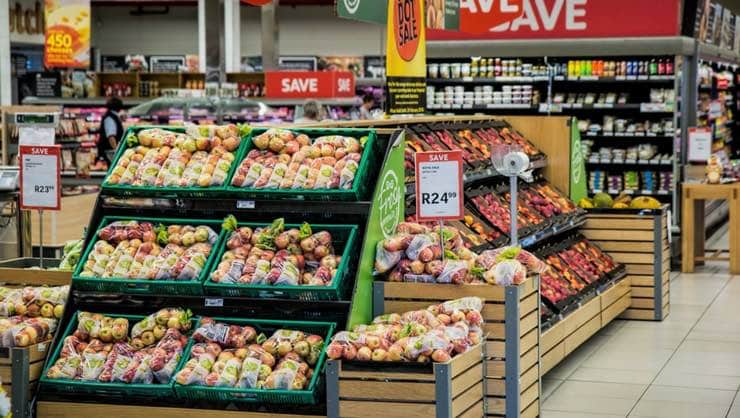Year-over-year inflation in the United States reached its lowest point in more than three years this July, signaling that the worst inflation spike in four decades may be subsiding. This development could pave the way for the Federal Reserve to implement an interest rate cut in September.
According to the U.S. Department of Labor’s report released on Wednesday, consumer prices increased by just 0.2 percent from June to July, following a slight decrease the previous month—the first in four years. Compared to a year earlier, prices rose by 2.9 percent, down from 3 percent in June. This marks the mildest year-over-year inflation rate since March 2021.
The continued slowdown in inflation may influence the U.S. presidential campaign, with former President Donald Trump having criticized the Biden administration for rampant inflation. However, Ryan Sweet, Chief U.S. Economist at Oxford Economics, cautioned that lower inflation doesn’t guarantee political gains for the Democrats, as consumers often focus more on the prices of everyday items like groceries and gasoline, as well as the stock market’s performance.
The report noted that nearly all of July’s inflation was driven by higher rental and housing costs, a trend that is expected to ease according to real-time data. As these costs stabilize, overall inflation is likely to decrease further in the coming months.
In July, grocery prices edged up by only 0.1 percent and were just 1.1 percent higher than a year ago, representing a much slower pace of growth compared to previous years. Nonetheless, many Americans continue to struggle with food prices, which remain 21 percent above their levels from three years ago, despite significant wage increases during that period.
Gasoline prices remained unchanged from June to July and have decreased by 2.2 percent over the past year. Clothing prices also fell last month, remaining nearly flat compared to a year ago. Additionally, prices for new and used cars declined in July, with used car prices, which had surged during the pandemic, dropping by nearly 11 percent over the past year.
However, some food prices, such as those for meat, fish, and eggs, continue to rise faster than pre-pandemic levels, while prices for dairy and fruits and vegetables fell in July.
Sweet suggested that while the July data supports the case for an interest rate cut in September, it is unlikely to be a substantial one, noting that calls for a 50 basis point cut may be premature. The Federal Reserve has maintained interest rates at a 23-year high of 5.25-5.5 percent for over a year. Sweet was addressing speculation from some in the financial markets who advocate for a significant rate cut following recent data showing the unemployment rate rising to 4.3 percent, raising concerns about a potential recession.
Economists attribute the increase in unemployment primarily to an influx of job seekers, particularly new immigrants, who have yet to find work and are thus counted as unemployed.
Austan Goolsbee, President of the Federal Reserve Bank of Chicago, indicated in an interview with The Associated Press that the July data suggests inflation is on track to return to the Fed’s 2 percent target. He also highlighted signs of a cooling job market, despite the Fed’s key interest rate remaining at its highest level in decades. Goolsbee’s comments suggest he would support a series of rate cuts in the coming months.
“For the last seven months of last year and the past several months, we’ve seen strong progress on inflation,” Goolsbee said. “And the employment situation is at least cooling. So it’s worth seriously considering this data.”
For nearly a year, cooling inflation has provided gradual relief to U.S. consumers, who were hit hard by the price surges that began three years ago, particularly for essentials like food, gasoline, and rent. Inflation peaked at 9.1 percent two years ago, the highest level in four decades.
Excluding volatile food and energy costs, so-called core prices rose by a modest 0.2 percent from June to July, following a 0.1 percent increase the previous month. Year-over-year core inflation slowed from 3.3 percent to 3.2 percent, the lowest level since April 2021. Core prices are closely monitored by economists as they often provide a clearer picture of future inflation trends.
When the Federal Reserve lowers its benchmark rate, it generally leads to lower borrowing costs for consumers and businesses over time. Mortgage rates have already begun to decline in anticipation of the Fed’s potential rate cut.
During a news conference last month, Federal Reserve Chair Jerome Powell noted that the cooler inflation data from this spring had bolstered the Fed’s confidence that price increases are gradually returning to the 2 percent annual target. Another inflation report, due next month, is expected to reinforce this trend ahead of the Fed’s September 17-18 meeting.
Inflation has eased considerably over the past two years as global supply chains have been restored, a surge in apartment construction in many large cities has driven down rental costs, and higher interest rates have slowed auto sales, forcing dealers to offer better deals to prospective car buyers.
Consumers, particularly those with lower incomes, are also becoming more price-sensitive, opting for cheaper alternatives or forgoing expensive items altogether. This has led many companies to scale back price increases or even reduce prices.
Nevertheless, prices for some services, including auto insurance and healthcare, continue to rise sharply. Auto insurance costs have surged as the value of new and used vehicles has increased significantly compared to three years ago, with a 1.2 percent increase from June to July alone, contrary to expectations of a smaller gain.





